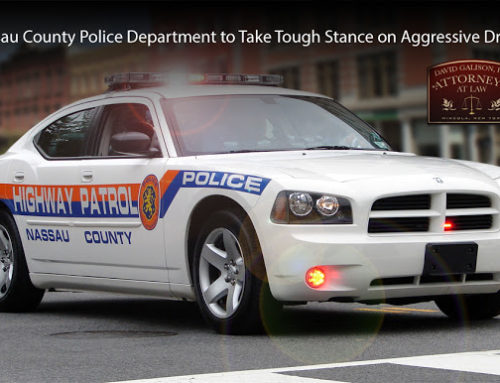CHEMICAL BREATH TESTING
And
Driving While Intoxicated
Blood to Breath Partition Ratio
In New York State, a person can be charged with Driving While Intoxicated pursuant to section 1192.2[1] of the Vehicle and Traffic Law if they operate a motor vehicle while having .08% or more of alcohol in their blood as shown by chemical analysis of their blood, breath, urine or saliva.
Breath testing is based upon the correlation between the amount of alcohol in a person’s breath and blood, and the ability to measure that amount accurately for each individual. In order to convert the breath sample into a blood alcohol percentage, all machines utilize a “Breath to Blood Partition Ratio” of 2100 to 1. This partition ratio essentially states that the amount of alcohol in one milliliter of blood is 2100 times greater than the amount of alcohol in 1 cubic centimeter of expelled breath.
The problem with the 2100 to 1 breath to blood partition ratio used by breath testing instruments is that it does not take into account individual ratios, but rather assumes that everyone has the same partition ratio. Studies have proven that individual breath to blood partition ratios vary among individuals with a range of approximately 1000 to 1 –to- 3000 to 1. What is even more troubling is that the breath to blood partition ratio varies within individuals depending upon which phase of alcohol absorption they are in.
Studies have shown that in the absorptive phase of alcohol digestion, the breath to blood partition ratio is often less than the standard 2100 to 1 figure. Therefore, if you were apply the standard 2100 to 1 breath to blood partition ratio during this phase, it would result in a false high reading. For instance, if an individual submitted to a chemical test that resulted in a reading of 0.10% and the individual had a breath to blood partition ration of 1000 to 1, the actual blood alcohol percent would be .05%. A person who operates a motor vehicle with a blood alcohol level of .05% is not intoxicated and cannot be charged with Driving While Intoxicated. Conversely, if a person’s breath to blood partition ration is greater then 2100 to 1 the actual concentration of alcohol in their blood would be underestimated if the standard breath to blood partition ratio is used.
So where does all of this leave us? It leaves us guessing as to a person’s true alcohol to blood concentration. The solution to this guessing game is a blood test. The only accurate way to measure the concentration of alcohol in someone’s blood is to test the person’s blood. Hospitals test blood everyday, all day long, and the police have the ability to take and test blood as well. In fact, the police have special blood testing kits that come with instruction cards for drawing and preserving blood for alcohol testing. When a person’s life, liberty and reputation are on the line, we believe that the most accurate testing available should and must be used, and the use of anything less is an injustice.
Filters, Bells and Whistles
Breath testing equipment has been utilized by police departments since the early 1970’s and has been deemed reliable for courts since that time. And yet, the science underlying the equipment still has not been perfected. As I’ve already mentioned, the equipment uses a presumption about an individual’s breath to blood partition ratio, which, depending on the individual and/or the phase of alcohol digestion, may not be accurate. In addition to that, CMI, Inc., the manufacturer of the Intoxilyzer series of machines utilized by the Nassau and Suffolk police departments, currently has twenty-four (24) versions of its Intoxilyzer series listed on the New York State Breath Testing Instrument List. Link To NYS Breath Testing Instruments List. If the breath testing equipment is as accurate as it is purported to be, then why do twenty-four (24) different versions of the machine exist? Why isn’t one standard machine used?
The answer is simple. Breath testing has not been perfected, and the companies that manufacture the breath testing machines are continuously trying to discover new ways to improve them. Imagine convicting a person of the crime of Driving While Intoxicated based on the results of the breath machine which indicated that the person was intoxicated, only to find out that a more accurate version of the machine was introduced a week after the person had submitted to the test. Given the very real reality of that situation, we cannot conceive of relying on a machine that is constantly being replaced and updated by new and improved versions when it comes to determining a person’s freedom.
Manufacturers of the breath testing equipment have still not discovered ways to address the following issues:
- Mouth Alcohol – If a subject has undigested alcohol in his mouth due to a burp, dentures, regurgitation or acid reflux, the breath testing machines can be thrown off or fooled into giving a false high reading.
- Breath Sample Duration and Flow – If a person is permitted or instructed to blow into the machine for too long a period of time or with too much or too little force, the machine can be thrown off or fooled into giving a false high reading.
- Trace Contamination – Most breath testing machines use infrared analysis to test for alcohol in the breath, but the infrared wave-lengths that are used test for the methyle group, rather than for the alcohol specific ethyl molecule. Therefore, if a person has a methyle compound in his system, the breath-testing machine will detect alcohol even though the subject has no alcohol in his system. This can occur when a person is exposed to certain paints or wood stains in addition to other compounds that contain molecules in the methyl group.
- Sample Temperature – If a person is sick and his breath sample is even 1 degree above 34 degrees Celsius, it will produce a reading that is approximately 7% higher than his actual reading. Despite this fact, the breath testing machines do not have safeguards to test the temperature of a person’s breath sample and the police do not check a person’s temperature before a breath test is administered.
As can be seen from the above trusting Breath Testing Devices can result in false convictions. It is my opinion that only a blood test will accurately indicated what a person’s true blood alcohol content is.
This is only the first part of a series of articles that will be published addressing deficiencies in the prosecution of DWI cases on Long Island. Please bookmark this page and check back periodically as updates will continue. You won’t believe how many flaws there are in the DWI prosecutorial machine known as NY DWI.
[1] Driving while intoxicated; per se. No person shall operate a motor vehicle while such person has .08 of one per centum or more by weight of alcohol in the person’s blood as shown by chemical analysis of such person’s blood, breath, urine or saliva, made pursuant to the provisions of section eleven hundred ninety-four of this article.








